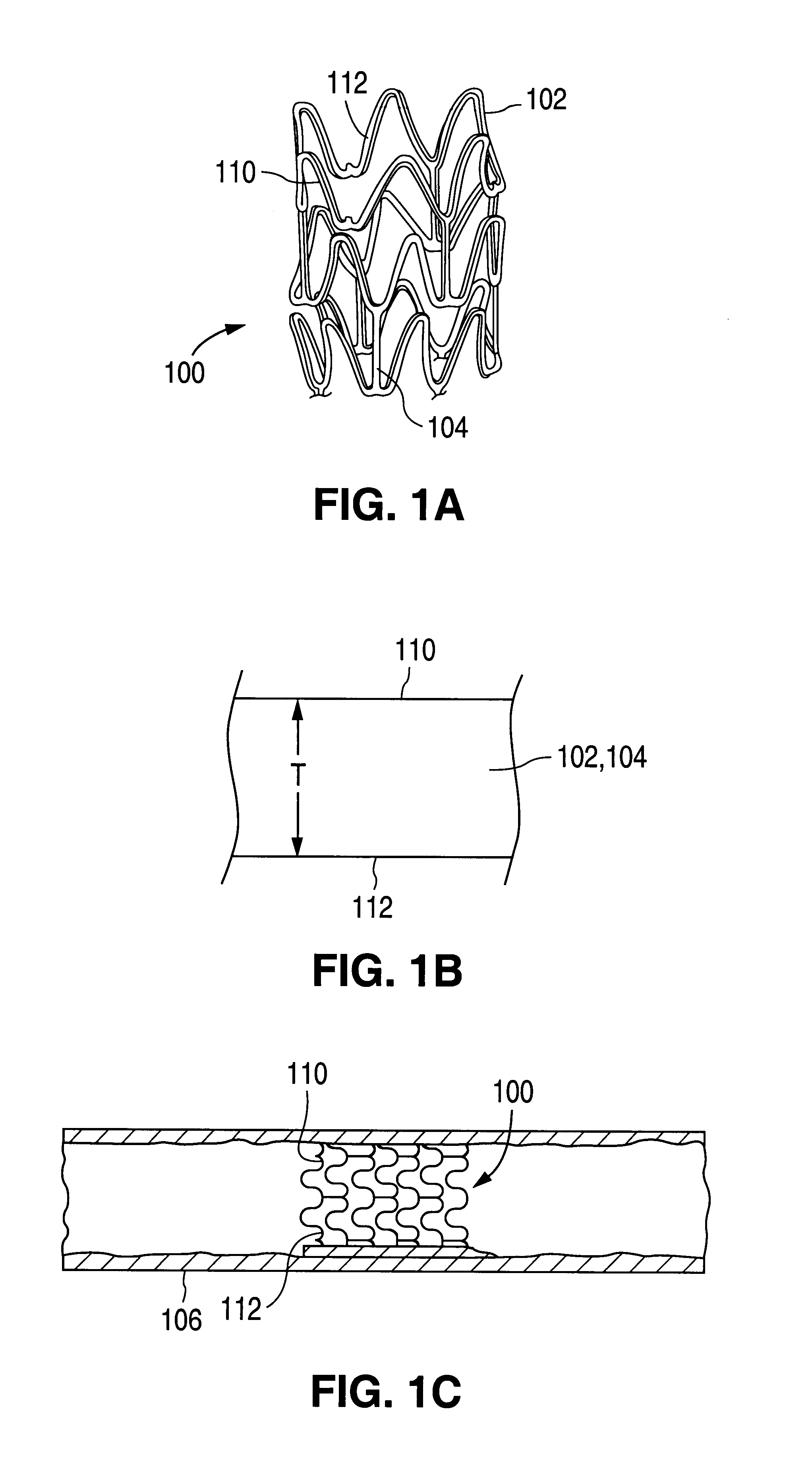Method for creating a textured surface on an implantable medical device
a technology of medical devices and textured surfaces, which is applied in the field of forming surface features of implantable medical devices, can solve the problems of disengagement from the stent, poor adhesion of the polymeric coating to the surface of the stent, and re-occlusion of the artery, and achieve the effect of increasing the amount of therapeutic substances
- Summary
- Abstract
- Description
- Claims
- Application Information
AI Technical Summary
Benefits of technology
Problems solved by technology
Method used
Image
Examples
Embodiment Construction
Implantable Medical Device
[0031]The present invention provides a method for treating the surface of an implantable medical device, such as a stent or graft, which are often referred to as endoprostheses. Beyond stents and grafts, however, other implantable medical devices, such as artificial joints, bones, pacemakers, and the like, may be made in accordance with the methods of the present invention and used for drug delivery. In the discussion below, the example of a stent is provided. Practitioners will appreciate, however, that the methods and structures of the present invention are not limited to a stent, but rather extend to all implantable devices having a metallic surface upon which a coating can be deposited.
[0032]FIGS. 1A-1C illustrate an exemplary stent 100 in accordance with one embodiment of the present invention. Exemplary stent 100 is a patterned tubular device that includes a plurality of radially expanding cylindrical struts 102 disposed generally coaxially. Connectin...
PUM
| Property | Measurement | Unit |
|---|---|---|
| thickness | aaaaa | aaaaa |
| size | aaaaa | aaaaa |
| size | aaaaa | aaaaa |
Abstract
Description
Claims
Application Information
 Login to View More
Login to View More - R&D
- Intellectual Property
- Life Sciences
- Materials
- Tech Scout
- Unparalleled Data Quality
- Higher Quality Content
- 60% Fewer Hallucinations
Browse by: Latest US Patents, China's latest patents, Technical Efficacy Thesaurus, Application Domain, Technology Topic, Popular Technical Reports.
© 2025 PatSnap. All rights reserved.Legal|Privacy policy|Modern Slavery Act Transparency Statement|Sitemap|About US| Contact US: help@patsnap.com



